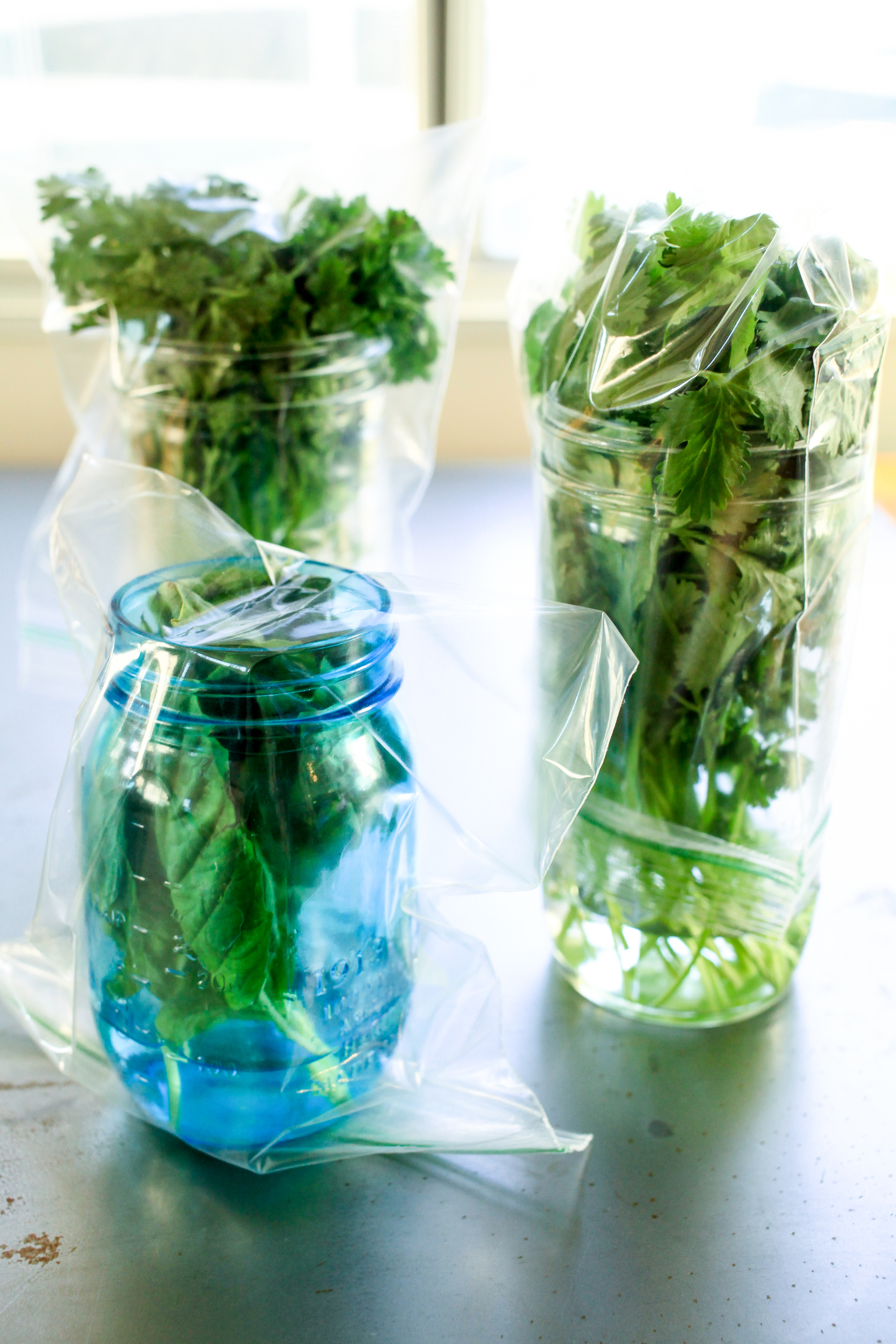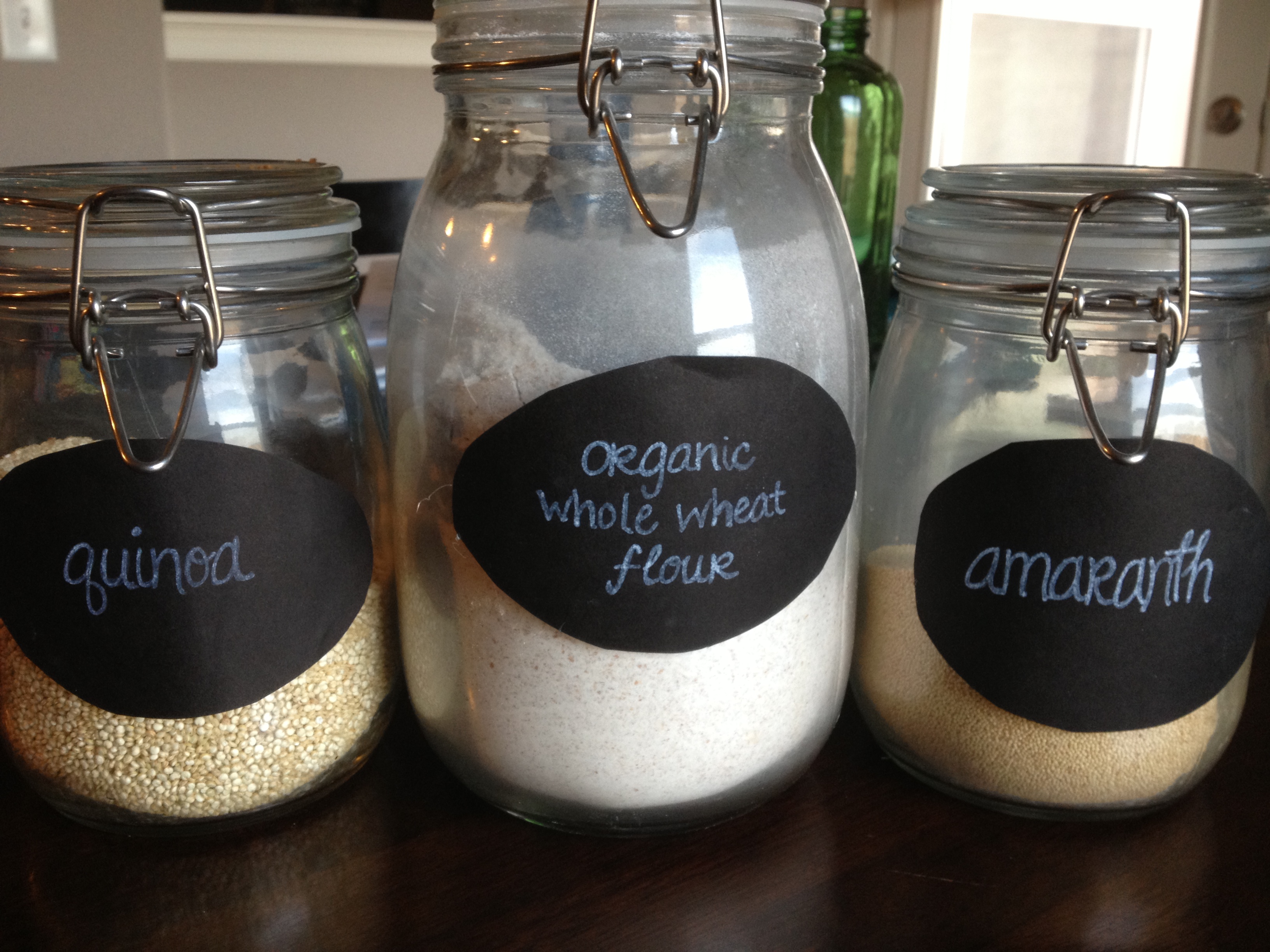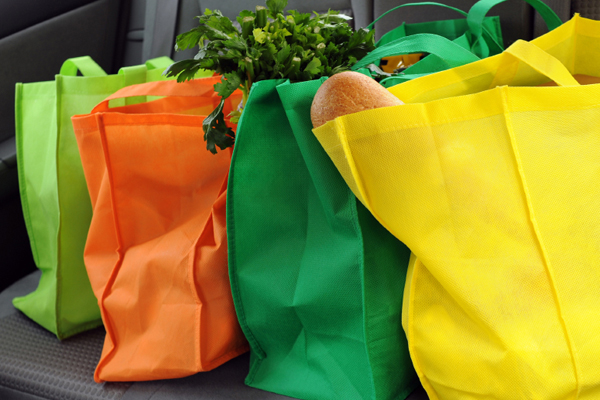6 Things You Should Do ONCE You Get Home From the Grocery Store
I have learned that fresh produce gets eaten a lot more and we have less waste when I come home from the store and immediately wash and chop most of the produce (except berries). This is a system I have that really works for me, but I was quite intrigued and learned a lot when I read this list of 6 other things to do once you get home from the grocery store from Oprah’s website to help keep food fresh for longer, among other benefits. I hope you’ll find these tips useful too!
1. Bye Bye Carrot Tops

Even though carrots and beets look more appealing to buy in the store with their beautiful green tops, you’ve got to make sure to snip those tops off once you get home. Those greens actually sap moisture from the roots (aka the carrots or beets), causing them to dry out and soften more quickly. So unless you plan to use vegetables within a day or two, remove the greens as soon as you unpack the veggies. Save the leaves for vegetable stock, soups, smoothies and salads.
2. Make an Herb Bouquet

I love buying fresh herbs to put in everything from smoothies to spaghetti sauce and when you buy them from the grocery store, those perfect little clamshells seem like the perfect thing to store them in, right?? Wrong. Apparently you should store your tender herbs with soft, pliable leaves (like basil, cilantro and mint) like a bouquet of flowers. Trim their stems and place them in a glass with water at the bottom. Cover them loosely with a plastic bag and set the glass in the fridge—except for basil, which should be kept (bag free) at room temperature. Don’t wash the leaves until you’re ready to use them.
Hardy herbs, such as rosemary and sage, can stay refrigerated in their plastic clamshell box, but they’ll last longer if you wash them, pat them dry, wrap them in paper towels and keep them in a resealable plastic bag in the fridge.
3. Stock Your Fridge Like the Supermarket
Keep your fridge organized like they do on the dairy aisle and place your newest items—such as yogurt, eggs or cold cuts—at the back with the older items at the front . That way you are always reaching for the nearer-to-expiring items first when cooking.
4. Open Up the Snacks
You’ve probably heard of people immediately washing up their fruits and veggies when they get home from the market so they ready to grab and go and more likely to be eaten. Well, a lot of dieticians recommend you also do this with your salty snacks, such as popcorn, nuts and trail mix. Divide them up into small, zip-top bags as soon as you get home and keep them in places you know you might need later, such as your purse, gym bag, glove compartment or desk.
5. Get the Flour Out of the Bag

If you have any alternative flours, such as gluten-free varieties like brown rice and even green bananas, they can be healthier but tend to spoil faster since they contain oil, which oxidizes when exposed to air (and eventually becomes rancid). Experts advise storing all flours in glass or airtight containers to deter pests. Most whole grain flours will keep for one to three months at room temperature, or two to six months in the freezer.
6. Deal with the Bags

It is always a good idea to put your raw meats in a separate bag in the store so juices don’t leak, just make sure you throw those bags that had meat in them in the garbage when you get home to avoid cross-contamination.
As for reusable bags, a study done by the University of Arizona and Loma Linda University found that almost every reusable bag that consumers were bringing into the store contained large amounts of bacteria (E. Coli was found in 8% of the bags!). The researchers suggest running reusable cloth bags through the washer or handwashing with detergent to reduce and wipe out the bacteria almost completely. If your bags are insulated, hand wash or wipe with disinfecting wipes, especially along the seams.
- www.oprah.com
- www.thepioneerwoman.com
- www.redfirefarm.com
- www.laughingwaterbrewing.com
- www.startribune.com
 Mary Richardson
Mary Richardson
Weekly Newsletter Contributor since 2014
Email the author! mary@dvo.com
